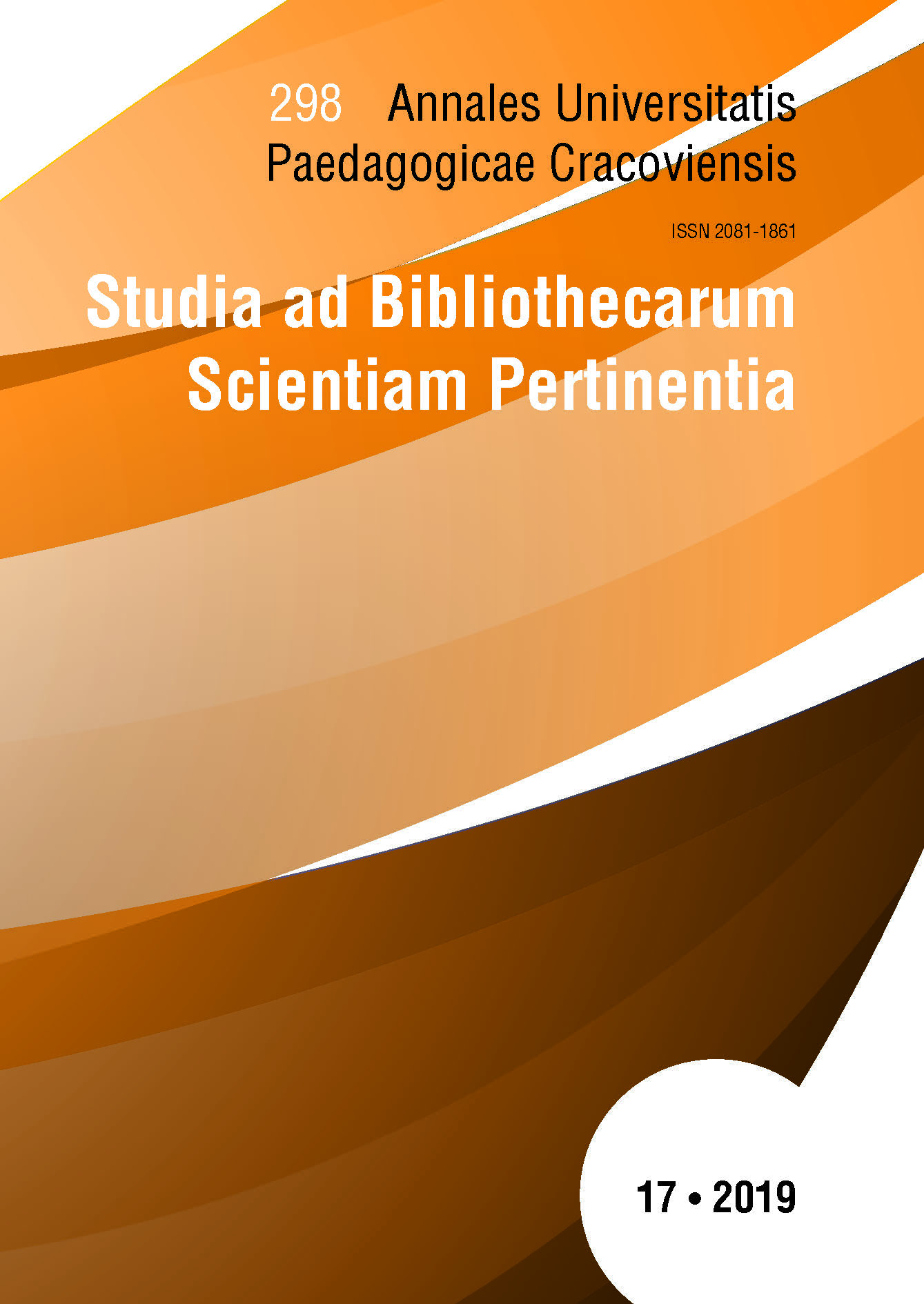Eyetracking jako metoda badania użyteczności portali e-learningowych
DOI:
https://doi.org/10.24917/20811861.17.20Słowa kluczowe:
e-learning; eyetracking; usability; education; information architectureAbstrakt
The purpose of this article is to indicate the usefulness of digital technologies, in particular eyetracking, in the analysis of information architecture on e-learning platforms. In the era of ubiquitous computerization, a significant expansion of the discussed technologies is noticeable for all branches of the economy and science. We also note the continuing development of the IT services market. New tools and technologies available on the market affect and significantly change the face of previously understood education, which evolves from its original shape into new forms. The effect of this phenomenon is the requirement to use ever newer didactic aids, and thus, proper preparation of children and young people for the skillful use of available technologies. A characteristic example of this type of assistance is e-learning, which currently supports education for both students and teachers. The article will present the results of pilot studies, based on the analysis of selected educational platforms using the method of tracking eye movements. The aim of the study was to check how and at what time participants were able to find and analyze relevant information on e-learning portals depending on their architecture and legibility. The analysis of the results of the study and data collected has allowed us to identify weaknesses and strengths in the structure of information contained on e-learning platforms, the improvement of which can significantly contribute to the increase of the quality and usability of distance learning tools. The results of the research indicate the problem of the readability of large information giants and navigational complexity.
Bibliografia
Bergstrom J.R, Schall A.J, Eye trackig in User Exerience design, Morgan Kaufmann, USA 2014
Duchowski T. A., Eye Tracking Methodology. Theory and Pratice, Springer International Publishing AG, 2017.
Hearst M. A., Search user interfaces, Cambridge 2009.
Holmqvist K., Nyström M., Andersson R., Dewhurst R., Jarodzka H., Van de Weijer J., Eye Tracking: A comprehensive guide to methods and measures, OUP Oxford 2011
Kalbach J., Designing Web Navigation, O’Reilly Media, 2007.
Szalach A., Osińska V., Informatyka w Edukacji – wokół nowej podstawy. Koncepcja wykorzystania eyetrackingu w korelacji nauczania informatyki oraz przedmiotów przyrodniczych, Wydawnictwo Naukowe UMK, Toruń 2017.
Ordon U., Sołtysik W., Skuteczność kształcenia akademickiego w formule e-learningu. Wybrane aspekty, [w:] Edukacja – Technika – Informatyka, nr 1/15/2016, Wydawnictwo Uniwersytetu Rzeszowskiego.
Osińska V., Wizualizacji Informacji. Studium informatologiczne., Wydawnictwo Naukowe Uniwersytetu Mikołaja Kopernika, Toruń 2018.
Rosenfeld L., Morville P., Architektura informacji w serwisach internetowych, Helion, 2003
Skórka S., Nowe wyzwania architektury informacji, [w:] „Bibliotetheca Nostra. Śląski Kwartalnik Naukowy|, NR 2 (44) 2016,
Wąsikowska B., The application of eye tracking in business, Scientific Council Polish Information Society, Poznań 2014
Garczark-Bąk U., Użyteczność badań eye trackingowych w pomiarze utajnionych determinant zachowań zakupowych nabywców, https://www.google.com/url?sa=i&source=images&cd=&ved=2ahUKEwisvZyNmO_gAhXFyaYKHUDYBU4Qjhx6BAgBEAI&url=http%3A%2F%2Fcejsh.icm.edu.pl%2Fcejsh%2Felement%2Fbwmeta1.element.desklight-fd2694ab-e119-41bd-a367-0b5bc6d683e4%2Fc%2FE_2016_iss3_54-71.pdf&psig=AOvVaw3d7b39z5uLen3oDIlvSY7W&ust=1552019150291448 (dostęp: 25.02.2018)
Głowacka E. Ekologia informacji. – sposób na choroby informacyjne, http://konferencja.biblio.cm.umk.pl/fileadmin/pelne_teksty/nowy__ekologia_inf..doc (25.02.2018)
Plebańska M., Kopciał P., Platforma e-learningowa jako narzędzie zarządzania wiedzą, E-mentor nr (2) 49 /2013, http://www.e-mentor.edu.pl/mobi/artykul/index/numer/49/id/1006 (dostęp:25.02.2018)
Pobrania
Opublikowane
Jak cytować
Numer
Dział
Licencja
Prawa autorskie (c) 2019 Annales Universitatis Paedagogicae Cracoviensis | Studia ad Bibliothecarum Scientiam Pertinentia

Utwór dostępny jest na licencji Creative Commons Uznanie autorstwa – Użycie niekomercyjne – Bez utworów zależnych 4.0 Międzynarodowe.

